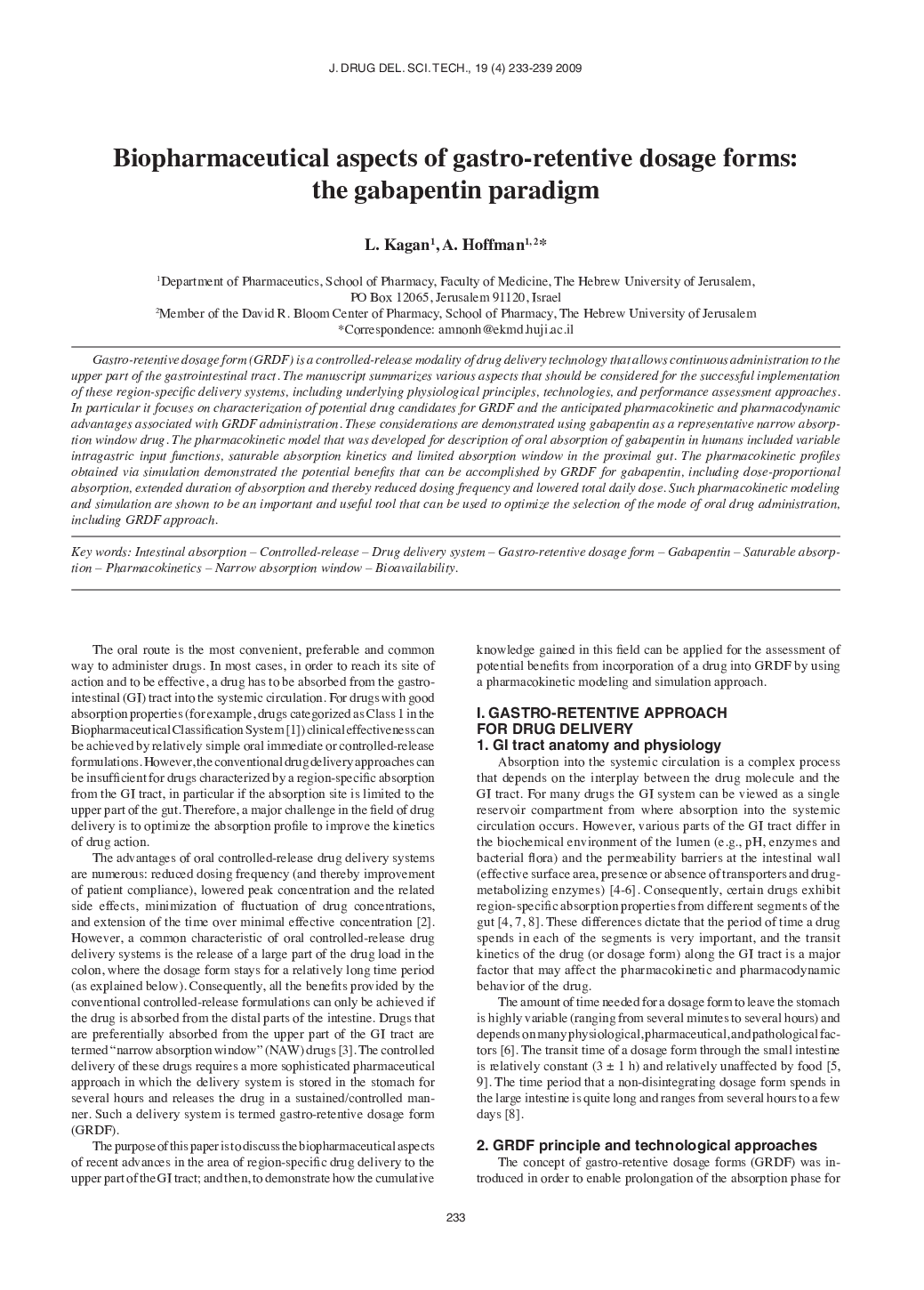| Article ID | Journal | Published Year | Pages | File Type |
|---|---|---|---|---|
| 2483774 | Journal of Drug Delivery Science and Technology | 2009 | 7 Pages |
Gastro-retentive dosage form (GRDF) is a controlled-release modality of drug delivery technology that allows continuous administration to the upper part of the gastrointestinal tract. The manuscript summarizes various aspects that should be considered for the successful implementation of these region-specific delivery systems, including underlying physiological principles, technologies, and performance assessment approaches. In particular it focuses on characterization of potential drug candidates for GRDF and the anticipated pharmacokinetic and pharmacodynamic advantages associated with GRDF administration. These considerations are demonstrated using gabapentin as a representative narrow absorption window drug. The pharmacokinetic model that was developed for description of oral absorption of gabapentin in humans included variable intragastric input functions, saturable absorption kinetics and limited absorption window in the proximal gut. The pharmacokinetic profiles obtained via simulation demonstrated the potential benefits that can be accomplished by GRDF for gabapentin, including dose-proportional absorption, extended duration of absorption and thereby reduced dosing frequency and lowered total daily dose. Such pharmacokinetic modeling and simulation are shown to be an important and useful tool that can be used to optimize the selection of the mode of oral drug administration, including GRDF approach.
